When to Start Using a Mono Astrophotography Camera

A mono astrophotography camera gives backyard imagers in the city the opportunity to collect dynamic LRGB and narrowband images from home. Although LRGB image acquisition using a filter wheel requires some extra setup time early on, the flexibility of this configuration is appealing.
I have experienced the extraordinary power of a monochrome sensor through narrowband filters and a filter wheel. My latest experiences in the backyard have me wondering if I should have switched to a mono astrophotography camera a long time ago…
Update (December 2022): I currently shoot primarily with a monochrome ZWO ASI2600MM Pro camera and 36mm Chroma filters.
Mono vs. Color Astrophotography Cameras
Those of you who shoot with a one-shot-color astrophotography camera (such as a DSLR), as I did for many years, may be hesitant to switch to a camera that spits out black-and-white images. The satisfaction of a colorful nebula appearing on the back of your camera display screen after a 120-second exposure is why we got into this hobby in the first place.
Make no mistake, a color DSLR camera remains the best option for beginners looking to get started in the deep sky. I spent many years doing so, and nothing will ever match the enjoyment of capturing objects in space from a dark sky site with a DSLR camera and telescope.
Yet experienced backyard astrophotographers insist that monochrome is the only way to go if you want to get serious about your deep-sky imaging. My audience had some strong opinions when I decided to upgrade from a DSLR to a one-shot-color camera in 2017, particularly when shooting through narrowband filters.
The results of my color camera + narrowband experiments were promising, but I knew those 12nm filters were better suited for a mono sensor.
Two full-frame dedicated astronomy cameras. ZWO ASI2400MC Pro (color) and ZWO ASI6200MM Pro (mono).
Making the Transition to Mono from Color
If you think about building a color image over time, the idea of capturing the best quality signal in each RGB channel sounds pretty good, right?
You lose the convenience of a one-shot color camera, but the extra work means capturing a better image overall.
However, the extra work isn’t just a matter of having more time (to shoot through 4 filters instead of 1), it involves additional hardware, and a more involved pre-processing routine.
There are some great software tools to help you with this (such as PixInsight), but a color camera is just easier to use overall.
Shooting with a monochrome camera means more files to save and store, 4 times the data to be exact. For example, a single image exposure captured with the ZWO ASI6200MM Pro is over 100MB.
When it Makes Sense to Shoot in Color
Even with the strong argument of better overall data with the mono camera I still choose to shoot with a color camera in a number of situations.
When I am at a dark sky site, capturing a broadband, widefield image, even an hour’s worth of integration time is enough to create a beautiful, full-color image.
I could shoot with a monochrome camera here, but that’s twice the amount of work (and equipment) for a picture that will probably turn out 11% better (give or take a percentage).
Instead, I get to spend more time enjoying the experience of being outside and shooting, and less time refocusing between filters and taking 4 sets of flats.
I still shoot with a one-shot-color astrophotography camera in many situations. William Optics RedCat 71 and ZWO ASI2400MC Pro.
Why Narrowband is Mono Territory
If I am shooting a narrowband project from the backyard, I will always shoot with a monochrome camera.
Narrowband imaging involves building the image through specialized filters anyway, so it wouldn’t make sense to collect a quarter of the signal in each shot.
Images collected with a monochrome camera and a quality narrow bandpass filter are seriously exciting, and some of the best images I’ve ever taken were shot this way.
My images captured using a monochrome CMOS camera (ZWO ASI2600MM Pro).
Why do serious amateurs recommend a mono camera over color?
A monochrome astrophotography camera can collect more signal (light) than a color camera can. (3 times as much, to be exact). The Bayer filter array found in a color camera reduces the amount of overall light recorded on your astrophotography subject.
By design, a camera sensor with a color filter array requires you to take longer exposures to record the same level of signal as a mono camera would. By automatically collecting light through your telescope into separate RGB channels as the light is collected, you are sacrificing the full potential of the light you work so hard to collect.
The Bayer filter found on color CMOS camera sensors. Wikipedia
In this article from PhotographingSpace.com, Dillon O’Donnell weighs the pros and cons of using a mono camera for astrophotography over color. Ultimately, it comes down to a trade-off between convenience and quality.
A color camera will get you to the finish line faster but will hold you back in terms of image quality at a certain point. You may photograph objects through your telescope for years before you reach a point where you feel like your progress has plateaued.
The bottom line is, a color camera is a jack of all trades, master of none.
Left: The Cone Nebula using a monochrome camera and narrowband filters. Right: The Trifid Nebula using a modified Canon DSLR with an LPS filter.
Making the Switch to Mono
Let’s get one thing straight, my color astrophotography cameras (DSLRs) will not collect dust on the shelf as I begin to focus on capturing images in monochrome. Creating beautiful full-color images of space will always be my primary goal.
For most projects, I simply don’t have the time (clear skies) to collect all of my data using a monochrome camera with the necessary filters. In a nutshell, I’ll capture color images around the new moon, and narrowband mono images the rest of the time.
I’ll never stop shooting in color with a DSLR, but new monochrome data will give my existing color images a real boost.
Won’t it take Three Times Longer to Produce an Image?
The added time involved with a mono astrophotography camera has been labeled a “myth” by some of the CCD manufacturers.
Even though you need to take more image exposures to complete a full-color image, you could argue that the overall image acquisition process time is shortened due to the fact that more signal is collected in each sub-exposure.
An electronic filter wheel controlled by the ZWO ASIAIR Plus helps to automate this task and makes the process of switching filters much easier. The software allows you to automate many tasks, including an image sequence running through each filter on its own.
A dedicated astronomy camera (ASI6200MM Pro) with a 5-position filter wheel attached.
The additional part of the process that some people may not consider, is the added time and care needed to take proper flat frames to match the LRGB image exposures.
Because each filter can potentially introduce new dust motes or vignetting, flats must be acquired through each filter and applied during the pre-processing stage.
A Monochrome CMOS Image Sensor
After several years of photographing deep-sky targets in color through a Bayer filter, I am now realizing the difference a camera with an improved quantum efficiency makes.
As you may have guessed, my heart once belonged to one-shot-color DSLR astrophotography. But, I am quickly realizing how a monochrome astronomy camera can give backyard imagers a tremendous advantage. It’s hard to imagine shooting with a color camera with a narrowband filter now that I have seen how much more detail can be acquired in mono.
Benefits of a monochrome camera:
- Minimize the effects of light pollution (narrowband)
- Excels at capturing emission nebulae
- Photograph fainter objects
- Image during the full moon (narrowband)
- Ability to capture a wider range of objects
Resources:
ZWO offers a wide range of high-sensitivity CMOS astronomy cameras. To date, I have enjoyed the ASI071MC-Cool (Color) and the ASI294MC-Pro (Color). The ASI 1600MM is currently one of the most impressive monochrome astrophotography cameras being used by backyard astrophotographers around the world.

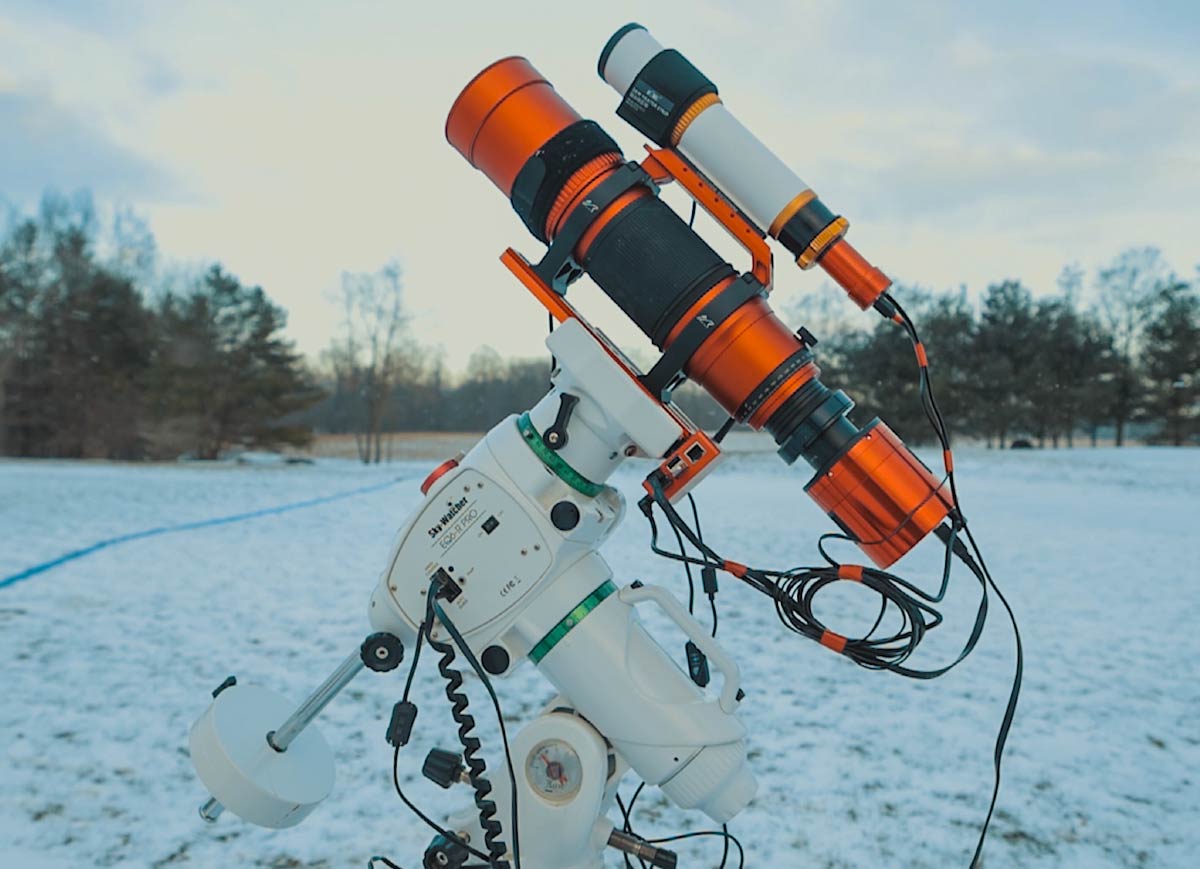
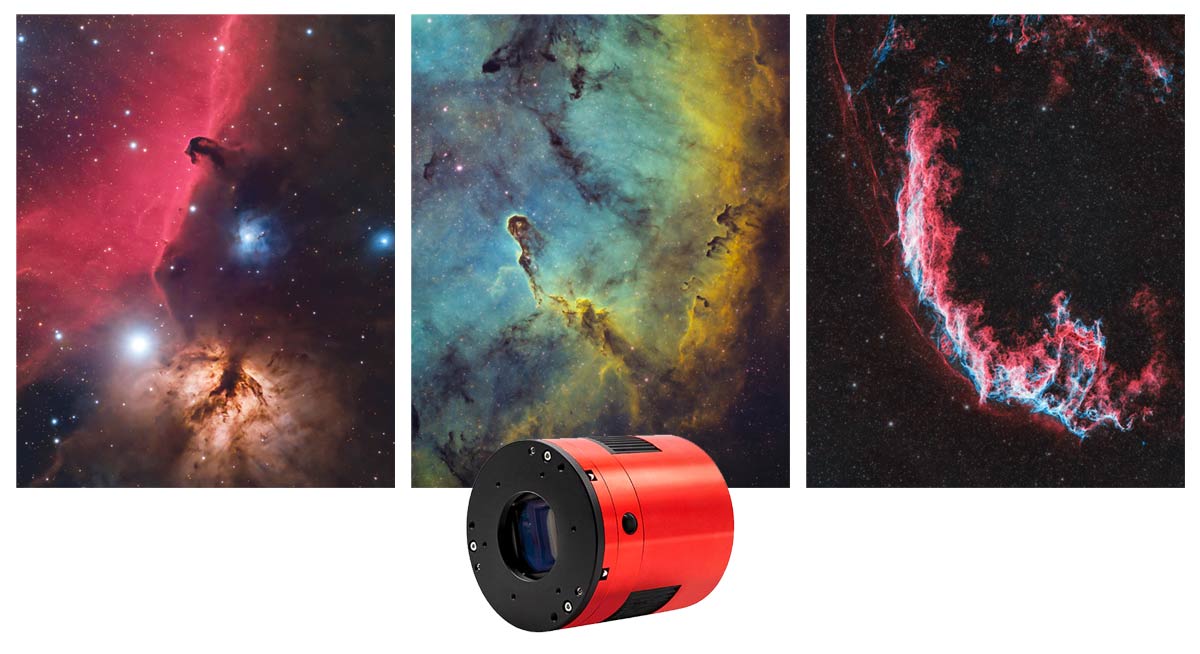
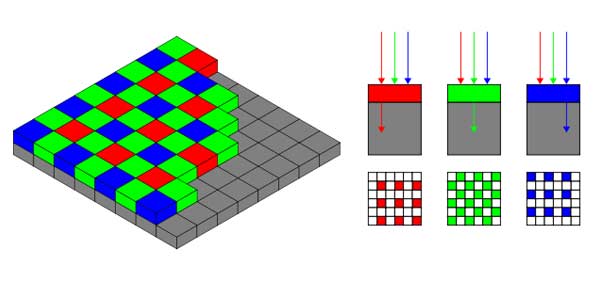
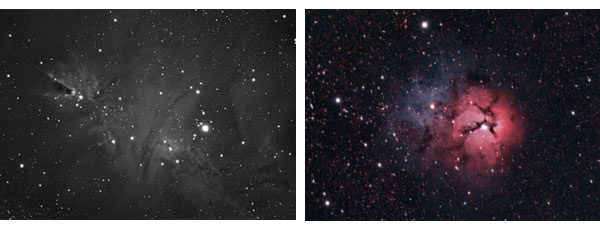

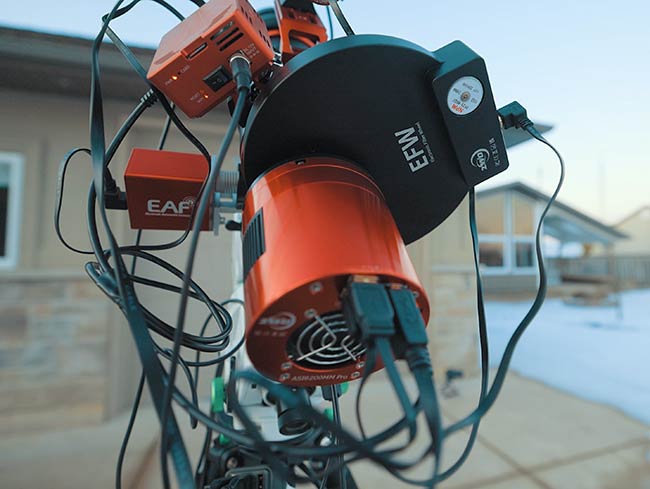
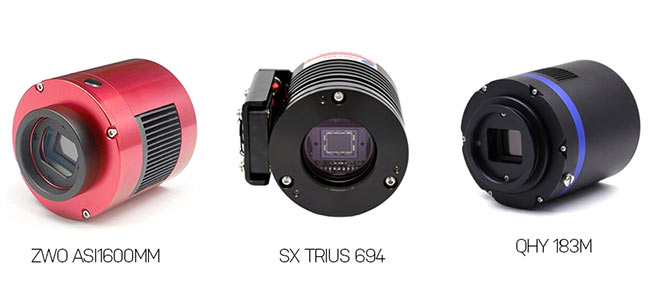

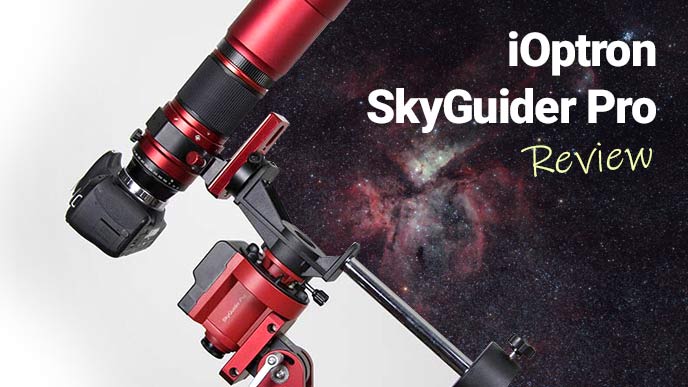


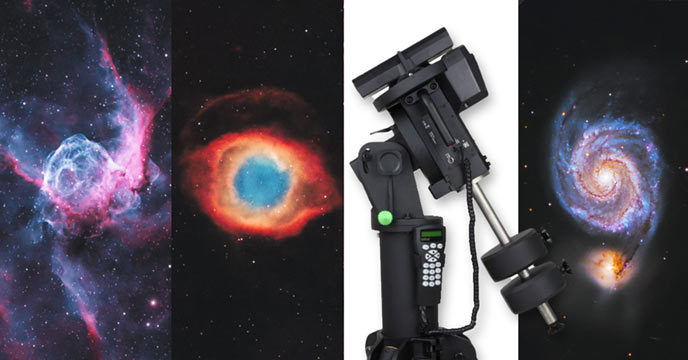
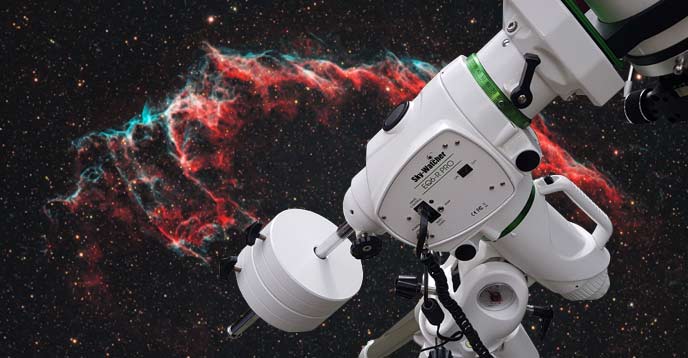
i was astounded at your mono image of the cone nebula. The depth and detail were incredible, especially given the conditions that night (bright moon). Good work!
Thanks very much Jim! I am itching to try this camera out on some summer nebulae when they return:)
Thanks for posting this Trevor. I am planning on doing the same thing, even before getting a new scope. Right now I am leaning towards the ZWO1600 although the ZWO183 or ZWO 178 might be OK. I entered the sensor sizes into Stellarium and compared them to the Canon T3i and discovered that the ZWO1600 is close to the T3i. The others are much smaller and would give a cropped image (smaller FOV). Unfortunately this have to wait as my wife was laid off in December.
I’ve enjoyed all the videos you’ve done Trevor, you make it all seem easy.
But in the picture of the video above with the caption
“I finaly started using a mono astrophotography camera”
The look on your dogs face seems to say ,oh boy here we go again .
I love it .
Regards Phill
I moved to imaging with a mono ZWO ASI1600MM-cooled camera with electronic filter wheel just over year ago and I haven’t looked back. Just one word of warning, the data you are going to get with these cameras is so much cleaner that it’s very tempting to over process the image which I’ve done on several occasions as I did last year with M51 which I have now reprocessed (which I believe you’ve seen on Twitter).
One last thing keep the video clips coming I enjoy watching them.
I wondering if it’s true that the total time (acquisition + processing) can be as short with a colour camera. I’m waiting for your experience with an automated setup to know it.
I started my experiences with mono and I can say that if clouds come before finish one of the channels: no colour image that night.
What about use Sequence Generator Pro for automation?
Thanks you for your videos.
My imaging time is only a little bit more doing LRGB then when I used a DSLR. With my DSLR I used to do 36 to 48 (3-4h) 5 min subs. With my “ZWO ASI1600 mm cooled” I do 1-2min for my luminance and 2-3min for my RGB. I can’t go much longer then this (unless I’m doing oiii/Ha bi-colour) as the quality of my skies Won’t let me. As for processing, I would say easier as you have cleaner/better data to work with but not necessarily quicker, I would say now I’m more formilier processing mono it’s about the same but then ever image is different. Last night (20th March) I imaged ngc4725, I did 60 Lum subs@1min and 20subs@2min for each R,G,B let’s see how that turns out, FYI the sky were not great but I was getting desperate for some imaging time☹️. As for clouds rolling in, I tend to do my luminance in one go at the beginning but split rgb in to batches, for example:- My imaging plan would take 8 Red 8 green and 8 blue subs and then repeat this 2 more times giving me a total of 24 of each, this way if the clouds roll in you hopefully have something of each channel to work with.
Great Article! Those are some wonderful cameras.
I’d like to switch (from DSLR) also. The disproportionate expense is a bit of a hurdle.
I wish some companies would consider making more affordable models…
Thanks!
Hello Trevor,
I was wondering how much cooler the sensor gets with the cooling on the Altair 183M or 183C than a regular dslr. Im assuming its about 10’C cooler but there does not appear to be anything regarding this subject on the internet.Thanks.
Congratulations fot your blog Trevor.
I have a doubte, with your explorer scientific ED 102, with the reducer and this CCD you have a resolution about 0,82 arcsec/pix, really with the HEq5-Pro it’s possible to manage this requeriment?
I live in Spain, it’s a hot weather country…, this not cooled CCD camera can be a good choice?.
Thanks,
Jose
Hello Trevor and others!
Please, I’m a newbie and I don’t understand how such a small mono sensor could be possibly better than APS- or full-frame-sized DSLR?
Thank you!
I’ve been using the 183Cv2 in Australia and it isn’t cutting it on hot nights. I’m now waiting for the TEC version of the mono to be released.
Hi Phil. I hear you. We’ve had a week straight of 30+ nights here in Ontario and I’ve opted for my cooled color camera in place of the 183M for the same reason. I’ll be demoing a new cooled mono camera next month!
Hi Trevor.
I have been vicariously enjoying your astro journey since I became interested 15 months ago.
The STC duo band filter seems like a good fit for a project I envision; and might save swapping H-a and OIII filters in the cold.
Did you purchase it directly from STC…or is there a North American (or better still…Canadian) distributor?
Thanks in advance.
Doug
Hi Doug! The STC Astro Duo-Narrowband filter is available from the William Optics website: https://williamoptics.com/stc-astro-duo-narrowband-filter-free-shipping (It looks to be out of stock at the moment) – I got mine directly from William
With a monocam you get higher true color resolution, since the color information is collected separately for EACH pixel, whereas with the colorcam only 25% of the pixels collect red, 25% blue and 50% green. Color reconstruction is done computationally. What is missing in a 1shotcolorcam is the luminescence channel. You added that using your monocam to an older RGB (3 channel) image here.
What is not optimal is using your monocam with a DUAL wavelength filter, since you are losing the color information from the two different wavelength. The DUAL wavelength filters are most useful with a colorcam, which will automatically process the image to reflect the colors of the two wavelengths. With a monocam you are getting more information using a single wavelength filter, since you can then reconstruct a color image later. You cannot do that with a dual wavelength filter, since that information has been lost during capture.
Thank you very much for the information, Jo. I’ll stick to the color camera when using a duo-narrowband filter. I look forward to creating new color images using a monochrome camera and a filter wheel in the near future. Thanks again for the advice!
Hello, I have ordered the STC Duo-narrowband filter for my ASI294MC-Pro. May I ask how do I stack the frames (each has both Ha and Oiii data) from Deep Sky Stacker? Do I just stack them the way I do it normally?
What about processing in pixinsight? Do you have any web reference for me to check the processing workflow in PI for the duo-narrowband images? Thank you.
Thank you, nice post. Actually I have an ASI294, do you think that could be interesting adquiring an ASI1600 mono to take images at once with two telescopes and combining them? (1600 for luminances and 294 for color). Thanks.
I don’t know much about this, but does it make sense, if you now use red, green and blue Filters to get 3 Photos with separated color channels in 16-Bit, which might give a 48-Bit color Photo after processed in Photoshop or similar?
Please don’t laugh, if this idea is too funny.
If I want to use a monochrome camera just for that purpose i.e., to process all my images in b&w…… is it necessary to also still use the different LRGB filters…..do I still need them for better b&w images or will just imaging in monochrome be sufficient? As recently as 2013 I was still using my home darkroom developing and printing in b&w. There have been many DSO images that are more appealing to me in b&w than color….just curious, thanks.
Doesn’t seem you’ve completely made the switch to BW as you use the one shot color cams in your newer videos. Seems that color won you over?
LOL – You’re right on the money there, Rayman. Soon after demoing my first (uncooled) mono CMOS camera – I got the ZWO ASI294MC Pro. Shooting in OSC now is a lot of fun, but I realize HOW much data I am missing out on per sub using a color camera, especially with NB filters! I’ve actually got something in the works with a mono camera again (finally), but this time it’s a CCD!
Trevor,
I am about to jump from my Ha modded Nikon D5300 to a cooled CMOS camera. Either the ASI294C or the ASI1600M. Can you tell us what MONO CCD camera you are referring to?
Thanks for the info, Trevor! Great stuff! I just switched to a ZWO 1600MM this Christmas, and I’ve been shooting with an HA filter and getting good results. But the dual narrowband filters (like the STC) that I already bought for my ZWO color cam are all advertising OSC-only, and I’m thinking WHY? Does a filter really care if there is a Bayer matrix sitting behind it? Why not capture multiple wavelengths in mono? I only have five slots in my SX filter wheel, but I might try swapping in my STC or OptoLong for the HA and see what I get. Definitely loving the extra sensitivity that the mono camera gives. I’m still working on the mono pre-processing workflow though 🙂
Best advice for light polluted environment? ZWO ASI294MC or Altair Hypercam 183C ???
Are we looking at the same picture here I mean the picture on the right blows the one on the left out of the water at least 3x lol
Awesome info Trevor. It looks like im about 3 years behind you in this journey. I have a dual imaginging setup with one osc cooled and one not cooled. Both zwo183. Thinking of upgrading the non cooled to a mono. But undecided on if i should go cooled.
Happy new year to you and yours😁
hi
thank you for this article. I understand this reply is pretty late, but I wanted to highlight a major issue that the article missed or glosses over. “Focus” , when shooting mono and set of filters, you have to refocus for every filter you have in the image train. This is a huge turnoff unless one invests in an auto focuser and a filter wheel all integrated together. Each wavelength of light focusses at a different point. This is just optics in action.
Hi Trevor.
Always enjoying your posts. I live in the country side in Denmark with completely dark skies. Not even a street lamp. But in Denmark we don’t have a lot of clear nights. I have up until now used a modded DSLR but I am looking to take a step further and buy a new camera. I read your review of the ASI294MC which you gave a glowing review. I am currently considering that camera, but after reading this article I am unsure if shooting LRGB or HaRGB on the ASI1600MM would be a more futureproof solution. It takes longer with a mono which is not ideal with the few brigt nights we have, but then it seems more usable during nights with moon thus creating more nights to shoot. How big is the difference quality wise would you say. Is the mono worth the extra time spent?
Trevor,
As always, I appreciate when you share what you are learning. I do wish you had added a third photo to your comparison of the mono and RGB + Luminance versions of the Whirlpool Galaxy. Can you please add the RGB version to the other two so we can see side-by-side comparisons of the before and after adding Luminance.
Here is my 1 hour 40 minute version of this same subject:
http://www.nyostrander.us/CoolLink/AstroPics/Arp85.html
To save space, you have posted your pictures at very low resolution, but even at the resolution I used on my website, if you zoom in you will notice that the picture gets very grainy pretty quickly. I have learned a lot since six months ago and I’m hoping I can retake this picture when spring galaxy season returns and get a much better image. I keep thinking about switching to monochrome, but I shudder at the cost of replacing my cameras.
LF: When I look at photos on websites where people use mono cameras I notice that they will take between one and two hours for each of the four photos (LRGB). Even at the long end, this is eight hours of exposure time. Recently, after reading articles in Astronomy and Sky & Telescope, I have been shooting between six and nine hours for my one shot color photos. I often cannot get that much time in a single night. Many of my photos are at four to six hours and are waiting for another chance to up the total time. The articles I referred to say really deep space photos require nine hours. The work I see with LRGB mono cameras are getting the same or better pictures in eight hours. Seems to me like the time savings is on the side of mono cameras. If you want an explanation of why the shorter times on mono gives less grainy final pictures than one shot color, I can attempt that but it would take a post twice the size of this one.
You note that a colour camera will take longer to collect the photons than a OSC camera. That is not strictly true. Suppose you have a 4 pixel monochrome camera. You exposure through ra ed filter for 1 minute during which time you collect 10 photons per pixel. Now you have 40 red photons. Swap to the green filter and accumulate 40 green photons, then blue to get 40 blue photons. Now swap back to green to get another 40 green photons. Why swap back to green? Well that is to make it a fair comparison with our OSC camera. It too has 4 pixels, 1 with a red filter, 1 with a blue filter and 2 with a green filter.
After 1 minute of exposure we have 10 red, 10 blue and 20 green photons. Repeat 4 times to give a total exposure time of 4 mins, the same as the monochrome camera. Now you have 40 red, 40 blue and 80 green…..exactly the same!
Whilst you are getting all the red photons, with a red filter in front of the sensor, you get none when the other filters are there and it all comes out in the wash.
However, the ratio 1R, 1B, 2G is fixed for the OSC camera and one will tend to get a ratio 25%R, 25%B and 50%G versus the 33% for each with monochrome and filters.
Where there is a difference however is in sampling. Each red/ blue filter is separated from the next red/ blue by a green due to the bayer matrix in a OSC camera and that is like 2×2 binning and the pixel resolution is worse. This is the most likely reason that monchrome with filters does better than OSC. However, this is also a function of the prevailing seeing and whether therefore the seeing or the sampling is controlling the resolution. If the seeing is controlling, then a OSC camera and monochrome camera are equivalent, with the possible exception of the tranmissivity of the filters. However, when the sampling is controlling the resolution, a OSC will do worse.